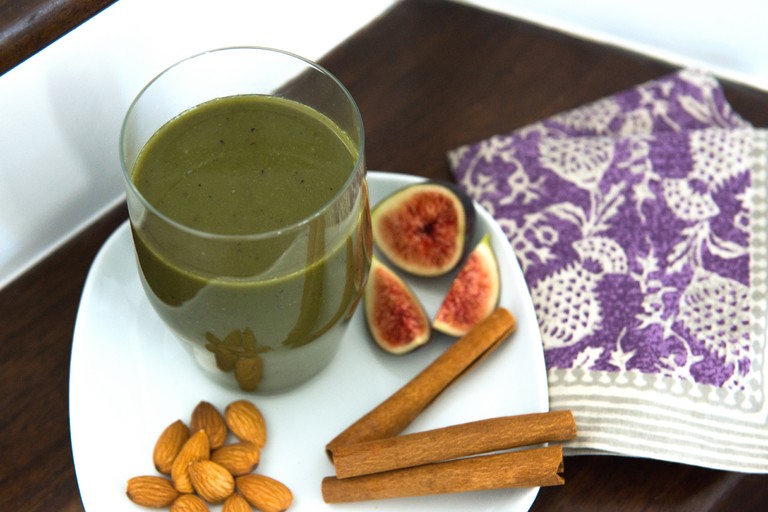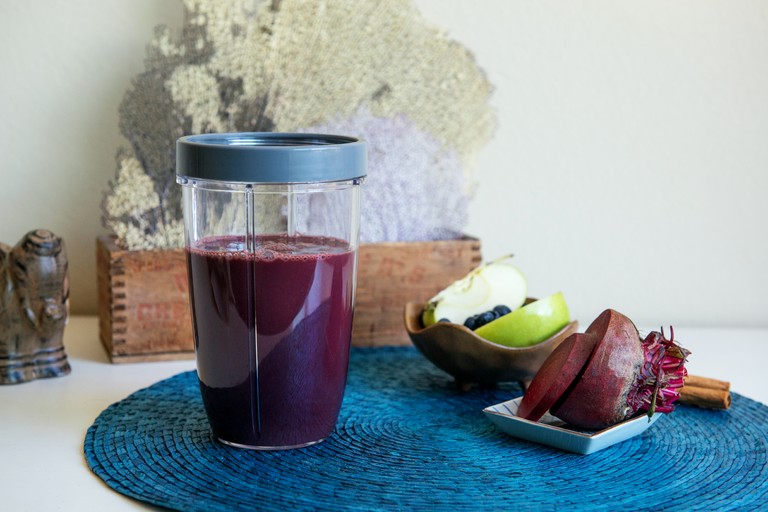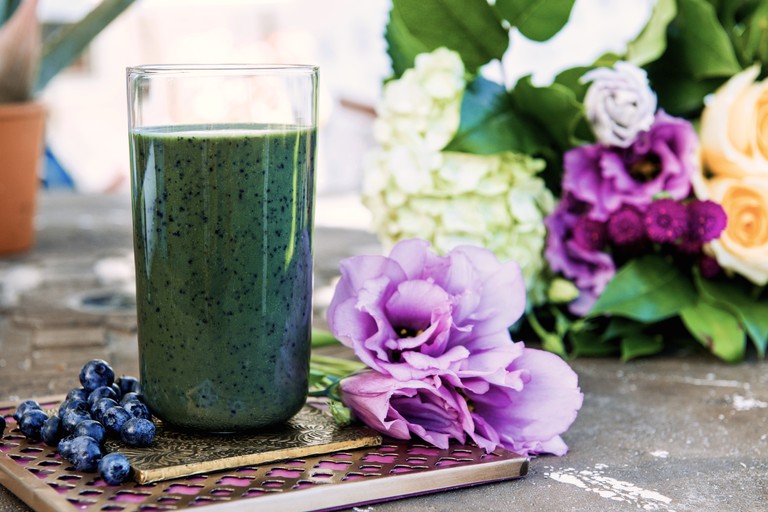On August 3rd, an enthusiastic group of registered dietitians (RD), foodies and moms joined us (@WildBBerries) and the RDs over at NutriBullet Living (@NutriBulletUNI) for a LIVE Twitter chat about Smoothies Gone WILD with Nutrition. Using #WildYourSmoothie, we talked about everything from upping the nutrition in smoothies for back-to-school, to the versatility of NutriBullets, and of course, Wild Blueberries.
TODAY – in 1 hour!! #WildYourSmoothie pic.twitter.com/oZjEkfQ1Pw
— Wild Blueberries (@WildBBerries) August 3, 2016
The number one goal of the chat was to make sure parents had some awesome nutrition information to make great smoothies to help fuel their kids as they headed back to school. . With busy mornings, smoothies are often the perfect nutrient rich grab-and-go breakfast solution even for the pickiest of eaters. Smoothies loaded with important nutrients like Wild Blueberries can provide kids a great start to their day and get them through a long day of learning by helping them to improve their focus and concentration in the classroom.
A5b: A 2015 Study: #WildBlueberries Boost Memory and Concentration in Elementary School Children https://t.co/WnLotzq5zO #WildYourSmoothie
— Wild Blueberries (@WildBBerries) August 3, 2016
@WildBBerries #BackToSchool #WildYourSmoothie #NutriBulletInspired Need it for energy, wakefulness, concentration https://t.co/pz27kgIxuA
— Marie&Jason (@WholesomelySpun) August 3, 2016
We also learned about the NutriBullet University program taking place in schools across the country to help educate children about how to eat better and stay health. If you haven’t heard about this amazing program, you can read about it here!
During the #WildYourSmoothie chat, we discovered that our profound love of smoothies was shared throughout the Twitter-verse. The crazy busy on-the-go lifestyles that so many of us share make smoothies a fabulous option, especially when everyone is trying to get out of the house on time. NutriBullets are also a great tool for families on the go – they can blend 1 – 2 servings at a time, and are so easy to use and clean up.
@theNutriBullet, we make a smoothie that tastes good and nutritious! @NutribulletUNI kids luvs them too! @WildBBerries #wildyoursmoothie
— NutriBullet Uni (@NutriBulletUNI) August 3, 2016
A2 Two words: TIME & EASE! Nutrition on the go is appealing to families juggling multiple morning responsibilities. #wildyoursmoothie
— NRodriguezRDN (@NRodriguezRDN) August 3, 2016
#ChatInfo: #NutriBulletUNI is helping students take back their health #childhoodnutrition https://t.co/4bTyihCwSS #WildYourSmoothie
— Wild Blueberries (@WildBBerries) August 3, 2016
We asked our Twitter Chat attendees how they made sure their smoothies were tasty AND healthy which lead to a debate over whether taste or nutrition should take top priority when making smoothies. The answer was surprising – neither! Our attendees said it doesn’t matter how good a smoothie tastes, or how healthy it is – unless the color looks appealing. Interesting! If the color of the smoothie was yuck, kids said forget it!
Since several attendees admitted to hiding vegetables like spinach or kale in their children’s smoothies, we at Wild Blueberries had to let them know that adding just a half a cup of Wild Blueberries per serving is a nutritious way to camouflage those dark green colors (and flavors), allowing kids to drink up! Mixing the smoothies up in a NutriBullet also helped to create a smooth, consistent texture, perfect for palettes of all ages!
If you have a good blender (like a #NutriBullet) you won’t even know they are there! #WildYourSmoothie https://t.co/3Ec6GfrySF
— Wild Blueberries (@WildBBerries) August 3, 2016
A5b: We drink with our eyes – ESPECIALLY kids #Smoothie color is important to get them to try new things #NutriBulletUNI #WildYourSmoothie
— NutriBullet Uni (@NutriBulletUNI) August 3, 2016
A1c: #WildBlueberries have an intense flavor that compliments #smoothies (& hides the flavor of strong vegs like kale) #WildYourSmoothie
— Wild Blueberries (@WildBBerries) August 3, 2016
When smoothies become a part of your daily routine, people often stick to the same recipe and don’t play around with different ingredients as much. The RD team at NutriBullet Living had some great ideas for ingredients to have on hand to keep smoothies fresh and inspiring. Things like chia seeds, hemp seeds and spices like turmeric, cardamom and even fresh ginger were top of their list. #WildYourSmoothie attendees were also eager to share some of their favorite smoothie making trends – turns out spicy smoothies are totally in vogue! Jalapeños were a universal favorite.
LOVE spicy ingredients like ginger, smoked paprika and sriracha in #smoothies. #WildYourSmoothie @WildBBerries https://t.co/UpT3AOj2bR
— Vicki Shanta Retelny (@vsrnutrition) August 3, 2016
A7c: We’re also seeing more “fun” ingredients in #smoothies THINK: ginger, hemp seeds, jalepenos and goji berries #WildYourSmoothie
— NutriBullet Uni (@NutriBulletUNI) August 3, 2016
Huge shout out to everyone who came and tweeted along during our #WildYourSmoothie Twitter chat – especially the team at NutriBullet Living (Gigi, Sarah, Krista & more!). If you have any questions about smoothies, frozen Wild Blueberries, back to school nutrition, or anything NutriBullet related, including their in-school NutriBullet University program, feel free to send us a tweet at @WildBBerries or the NutriBullet Living team at @NutriBulletUNI and include #WildYourSmoothie in your tweet!
H/T to @thenutribullet @NutriBulletUNI #WildYourSmoothie FOLLOW them #NutriBulletUNI #NutriBulletInspired pic.twitter.com/a1wwYoYcyl
— Wild Blueberries (@WildBBerries) August 3, 2016
Check out our original #WildYourSmoothie Twitter Chat blog post here, or catch the Storify archive here!


